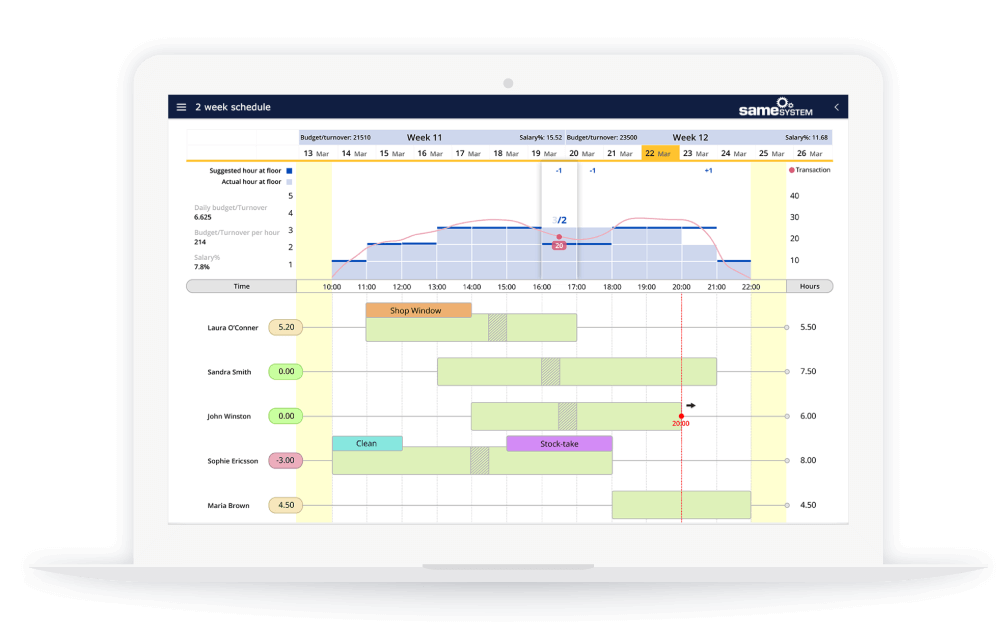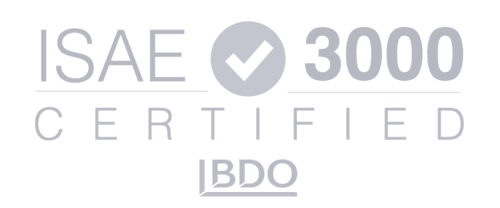Five useful workforce management features for small retail business
Small stores and global chains need widely different things from their software solutions. Activation Specialist Martin Vondracek lets you in on the workforce management tools that are particularly useful for small retailers.
Few store owners open their shops because they are passionate about administrative work. Most opticians, kiosks, local clothing shops and yarn stores are run by hard-working people who love sales, customer contact and their products.
Nonetheless, payroll calculations, shift planning and reporting take up a significant amount of time for store owners. They often act as store managers, finance managers and HR managers all at once, stealing focus from core tasks like sales and customer contact. The good news is that there are tools to help ease store administration.

Martin Vondracek
Solution Activation Specialist,
SameSystem
1. All features accessible on one platform
Small retail business owners often juggle many roles, which makes it valuable to have all features gathered in one system.
“Owners of small businesses need access to as many functions as possible on their IT platform. When they are free of navigating different systems to plan shifts, calculate salaries and handle contracts, they save valuable time that can be used on the shop floor,” says Martin Vondracek.
It is often difficult for small retail businesses to create structure around everyday tasks. Because of this, it is useful with a solution that can be tailored to your needs.
“If you use SameSystem, for instance, you can influence what features are visible on the platform. The option of adding extra fields is popular. If a store owner, for instance, wants to keep track of the keys to the store, it is possible to add a field where you register who has a key and what the key number is. That way, you create structure around small everyday challenges.”
2. Efficient scheduling and automatic payroll processing
Most retailers know the difficulties of building a schedule. It is often a time-consuming process when holiday plans, students’ timetables and unexpected changes need to be considered. Luckily, there are tools to ease the process.
“It easy and fast to build a schedule with a workforce management system, because the system takes budgets and employees’ plans into consideration. You are free of calling one employee after the other with shift requests because employees are able to report availability and confirm and swap shifts with their smartphones. This saves you a tremendous amount of time.”
With an IT solution like SameSystem, you also ease the payroll process significantly.
“Because schedules are updated and approved, retailers are able to export salary data from SameSystem. In most cases, it is also possible to integrate with Point of Sale systems (POS) and we set up salary supplements and collective agreements, enabling retailers to calculate salaries with just a few clicks.”
3. Forecasting – predict budgets and staffing
Not many industries are as affected by external factors – such as seasons, day of the week and local events – as the retail industry. Even though most store owners are skilled at navigating these aspects when they build schedules, there is time and money to be saved if you invest in a system with integrated forecasting.
“With forecasting, you pull historic data from the cash registers of the stores and use it to draw up budgets and predict the need for staffing. It works like a digital crystal ball of sorts which ensures that you never have too many employees at work, nor too few.”
4. Thorough implementation and unlimited support
So far, so good. In Martin Vondracek’s experience, many retailers see the advantages of features like forecasting and intelligent scheduling but worry about the implementation process. Will it be too difficult to navigate and familiarize yourself with a new system?
“Store owners are busy people. Even though the investment will free up resources, it can seem like an immense workload to learn how to navigate a new system. Time is of the essence for our customers – the more seconds and minutes they spend on the store floor, the more they can sell.”
Because of this, it is important for them to have access to flexible and thorough training that is followed up by competent support.
“In SameSystem, we prioritize the implementation process and being available to our customers. I have, for example, had implementation meetings in the evening when my customer’s store was closed, and their children put to sleep. We make time for our customers to ensure that they are up and running fast.
5. Save money on the bottom line
Money talks and, obviously, a software solution should not cost more than you gain from it. It is worth noting that the price structures among workforce management solutions differ. In some companies, you pay per employee, while you pay a fixed amount per store at SameSystem, which also includes unlimited support.
“With SameSystem, you don’t need to pay extra to customize the system, and our support is available to all employees in your store. In my experience, retailers who use SameSystem pay the lowest price on the market and has access to the most features,” says Martin Vondracek.
Get started optimising your retail operations.
Let us show you how


